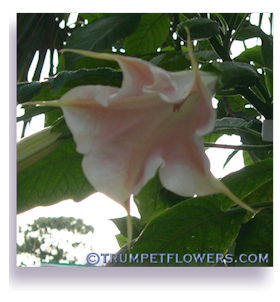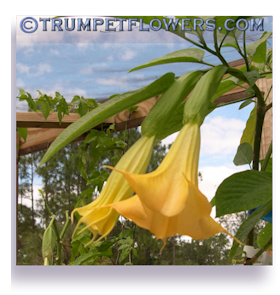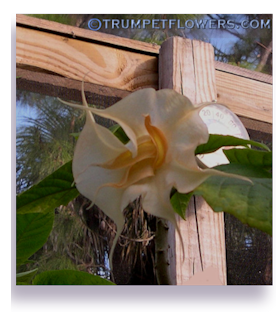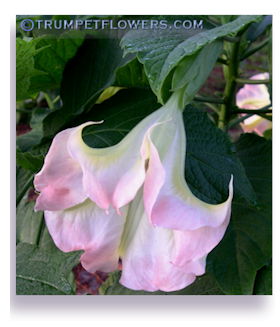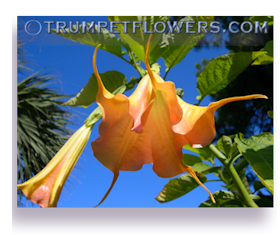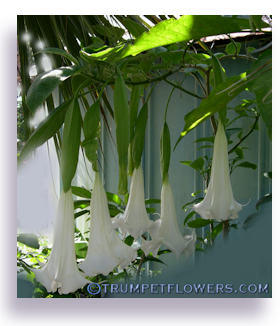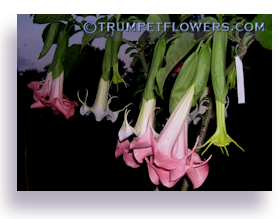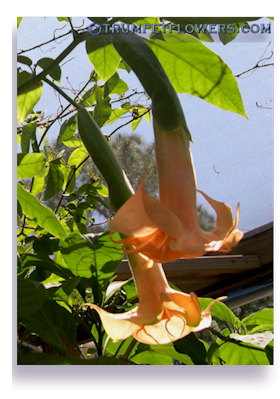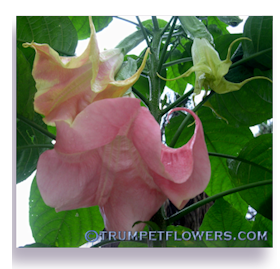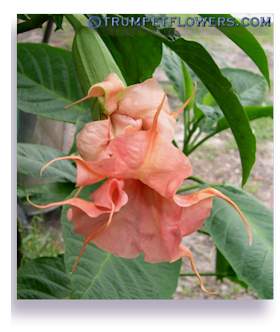 Organic Gardeners are truly 'a different animal,' when it comes to gardening. Organic gardening, unlike retro-gardening,entails the ideal of allowing for other forms of mother nature to survive, as opposed to wiping out everything that is not your chosen plant.
Organic Gardeners are truly 'a different animal,' when it comes to gardening. Organic gardening, unlike retro-gardening,entails the ideal of allowing for other forms of mother nature to survive, as opposed to wiping out everything that is not your chosen plant.
In an organic garden, frogs, toads and beneficial insects are sought after. A stray weed here and there does not end the world,and chemicals are unheard of. Biological controls are used instead, which helps to stabilize the wildlife in any one area, makingdiversification of life more balanced between the plants and the animals. And you help make it all happen.
Organic gardeners reap the benefits of knowing that they and their family are eating healthy, nutritious, and non-poisioned foods.Organic gardeners I've met also don't seem to stress as much as those intent upon killing every bug from here to Timbuktoo, afraid thatany one small insect can wipe out all their hard work. An organic gardener will give up a fruit or two, and save the rest of the bounty by fighting back with organic means.
First Things First
Site Preparation
Preparing the area where you intend to set up your garden should be well planned in advance. The further ahead of time you know where the futuregarden will be, the better you can prepare the area for the plants that will bedded there. For more on choosing a Site, use this link:Choosing Proper Planting Sites.
Start a Compost Bin
After you have chosen a good site for the will-be-garden or orchard, remove the leaves and yard debris from the surface, and start a compost binor pile. You can either dig a pit, make a pile, invest in a premanufactured compost bin, or make one yourself. In all cases, (except maybe the pit-style)you will need to turn the compost every few days or weeks in order to mix it and help it break down. For more information on composting and making a bin of your own,see the page How to Make Your Own Compost
Dig Out the Weeds
After you have removed and begun composting these things, you can use a shovel or other mechanical means to dig up all perennial rootsand weeds. Try to get every one of them before they go to seed. In this way you won't add to your weeding situation as much in the future.
Soil Enrichment
Cover Crops
 In times past, farmers would allow the land 'to rest,' in order to restore nutrients and microbes back into the soil. They were right in that thenatural plants and weeds of the praries would rebuild the soil in time, allowing it to be cash crop supporting once again. This took many years in some cases.
In times past, farmers would allow the land 'to rest,' in order to restore nutrients and microbes back into the soil. They were right in that thenatural plants and weeds of the praries would rebuild the soil in time, allowing it to be cash crop supporting once again. This took many years in some cases.
Today, we can plant specialized cover crops, called so as they are usually planted in winter; to speed up this soil rejuvenation time, and allow us to plant our crops and trees sooner.
Cover crops are usually either good strong ground cover type plants or grains that naturally replace micronutrients back into the soil. To name a few,sweet clovers, ryegrass, buckwheat, winter ryes, hairy vetchand oats are frequently used.
Legumes like the clovers and hairy vetch help to 'fix' nitrogen into the soil. This is an excellent organic method of adding nitrogen to the soil without having toverly buy expensive, nonorganic fertilizers. Leguminous crops such as red clover should be planted in spring, summer or fall.
The legume cover crops also need specific strains of bacteria in order to fix the nitrogen into your soil. Make sure the seed you buy is pretreated withrhizobium. Most soils already contain it, but if your soil is poor or too sandy, it may not be present and then all of your hard work would be wasted. If you cannot find seed inoculated with the bacteria, you may opt out for buying it seperately.
Red clover is a very deep rooted legume that grows very well even in marginal soil. It should be left in place for a full year before tilling under. Incidentally, If you plan on or have cows, this is a great foodcrop, as it makes the milk sweet and the meat tender.White clover, or 'Dutch clover' can be planted anytime during the growing season, up to six weeks before the first hard frost is expected.
Winter ryes and rye grains are very hardy and are used mainly for winter cover cropping. The seed germinates at a chilly 33°, so it can even be planted after a frost.Ideally, it is best to sow about a month before you expect your first frost. It will overwinter quite well and in spring puts out a lush green landscape. It is then tilled underand one waits at least a month before adding any plantings. It can be difficult to till under, so you maywant to have a rototiller or larger piece of equipment if you decide to use ryegrass as a cover crop.
Opposingly, if you are dying to get started and don't want to wait for a cover crop to live, die and till under, you can go ahead and amend the soil right after removing the weeds.If you have a few months, or even a season, try covering the plot with stacks of wet newspaper to smother any seeds that may have remained. For Soil Ammendment ideas, try this link: Do It Yourself Soil Ammendments.
That compost you've been making...
The compost you've been making now has it's final use. The cycle is complete. Use it lavishly in all the areas of the garden. Don't forget to make up some batches of Compost Tea to feed the tender plants later.
Invite Beneficial Creatures
Have the Allies Over for Dinner...
Only a small amount of insects are actually harmful to food crops. Most are excellent at pollination, nectar gathering, eating weeds, and preying on thepest insects. Bats, birds, toads and frogs are also great allies of the organic (and other) garden. One bat will munch up over 1,000 insects in a single night.One garden toad will eat around or over 100 insects in a night's outing. And don't forget, toads aren't picky. They love the taste of a slimy slug just as much asthe thick skinned cutworm! Birds also prey on insects that harm our food crops and trees. Wood peckers actually hear the immature cicada or other larvaeburrowed inside the tender flesh of your beloved peach. After hearing it wriggle around inside, they set about to pecking it out with that magnificent hardbeak of theirs. Other birds like swallows eat insects on the wing. Jays and Robins eat grasshoppers and cutworms, juicy tomato horned worms and the like.
Other insects are predators of their own kind...cannibals if you will, in a sense. Praying Mantis, Assassin bugs, Ladybugs, Lacewings, Dragonflies and ParasiticWasps are just a few of the many insects that will help ward off the other more obnoxious insects.
Provide grassy areas for them to hide in. Also give thema shallow dish of water filled with stones so that they can drink but not drown. Plant flowering herbs to attract pollinators that give you fruit. Don't smoke in your garden. There have been studies suggesting tobacco smoke can throw off a honeybee's ability to hone in on it's homeward bound pathway. Besides, smoking may give your tomatoes the dread tobacco mosaic virus!
Put out birdbaths for the birds. Build a bat house. Woodpeckers love peanut butter. Place out a large-diameter pvc pipe sunk into the ground. (large diameter stops squirrels from doing their shimmy up after your peanut butter)Place a secured wooden platform on the top. Smear peanut butter on the top area and they will come.
Contrary to old belief, I have never in my life seen a toad use the toad homes they sell. RatherI have witnessed them just before dawn, looking for some soft earth that is damp and protected. There they burrow downwards until they dissappear and you'd neverknow they were there. Provide the toads with moist, loamy soil in protected areas like barns, outbuildings, large shrubby plants in your yard, etc. They also like to soak inpuddles at night when coming in from a food trek. Give them shallow pools of clean water. Maybe you could sink a shallow piece of tupperware into the earth in an area you knowthey frequent. Place many large, clean soft edged stones inside the water filled tupperware so they can get in and out easily. Toads are not as agile in water as their bretherenthe frogs. They will drown without an easy way out. Change the water frequently. Hopefully it is in a place that the rains will do most of that workfor you.
Place a small pond in one area of your yard (if you have the room) and let it stagnate. Plant large African Iris or other tall grassy plants around it to attract frogs. Dragonflies will land on them. Lacewings are also attracted to ponds. The frogs will have a place to hide and lay their eggs. No matter if it getsslimy, the water will balance and within 60 days clear to crystalline. If you are worried about mosquitoes, add some guppies. They eat mosquito larvae. Soon the skeeters realize they are in the pool and won't even lay eggs in it anymore. Make sure to top the pool off with hose water when it needs it. This is a haven for frogs. They will lay their eggs there and you'll havemany more beneficial critters that eat hundreds of bad insects nightly.
Come winter, and if you're in a northern climate, either add a heater to the small pool or bring the guppies indoors. They are tropical fish and cannot withstand frostingtemperatures. Also dig up tender plants and save them in the basement for next year.
Choose Pest Resistant Plants
Be Picky
With due diligence, you can choose cultivars that are more disease and pest resistant thatn others. Or choose plants to grow thatare easier to care for and less prone to pest infestations. For an example, strawberry, blackberry and raspberry take up less space, provide delicious fruits,and are easier to care for than large fruit trees. They are pruned easier, have few pest issues, and can flower (depending upon the cultivar) and thereforeprovide fruit, at different times of the year. Do your homework and pick out fruiting plants that will make your job easier, not keep you on the edge of your seat looking forthe newest organic pest or disease control out there.
Sevin dust is a poison. Use flour from the kitchen instead. When bad critters eat it, they die from the flour swelling up their stomachs, effectively exploding them. Here is a site that is dedicated to helping you find out what is really in your veggies and other food from the super market. Food Truth Freedom.
Relax, Observe and Enjoy
Study the Garden
Enjoy yourself. Creating an organic garden is not supposed to be just about the vegetable and fruit crops, but you should be getting somemental pleasure out of it as well. Take the time to sit down, be still, and observe the creatures that frequent your garden. In this way you'll get a betteridea of what pests frequent your area, and also what insects you have that prey upon them. By learning what insects actaully help your garden, you will knowwhat their eggs and larvae look like, and not destroy them should you happen upon them. After a butterfly lasy eggs underneath a leaf surface, go over and gently turn it over to seewhat they actually look like. Mark that plant with a named stake if you must, to remind you to protect it for the butterflies, wasp, or ladybug that just gifted youwith an entire army of pest killing soldiers.
After you have learned the difference, when turning over leaf surfaces (which you should do frequently) you'll begin to know which insect eggs belong to thegood guys and which ones don't. Aphids can be blasted away with a strong jet of water from the hose. They will never live long enough to be able and return to the plant if you spray them hard enough. Look in the newest leaf and flower formations on the plant for them. That's where they like to hide and suck the sweet juices out ofyour plants.
For more information about organic pest control, visit the page: How to Control Pests Organically.
Ordering Fruit Trees in Florida
For a chart on blooming and fruiting cycles of trees that grow well in Florida, click here: Chestnut Hill Tree Farms Fruit and Flowering Calendar. Great place to order fruit trees and Florida grape cultivars from too. I have apples, peaches and blueberries from them. All are thriving!
If you have a young family, get the kids involved and teach them what you've learned. Good organic gardening habits are a great thing to pass onto your children. It will teach them respect for other living things, and calm their spirits at the same time. They will learn to love nature and all of her glory.Remember, gardening is also a hobby. It should not be a chore. One should enjoy themselves. Like the old saying, 'Stop to smell the Roses.' You'll be a better gardenerfor it.
Tags: organic gardening, yes organic garden, organically start a garden,

